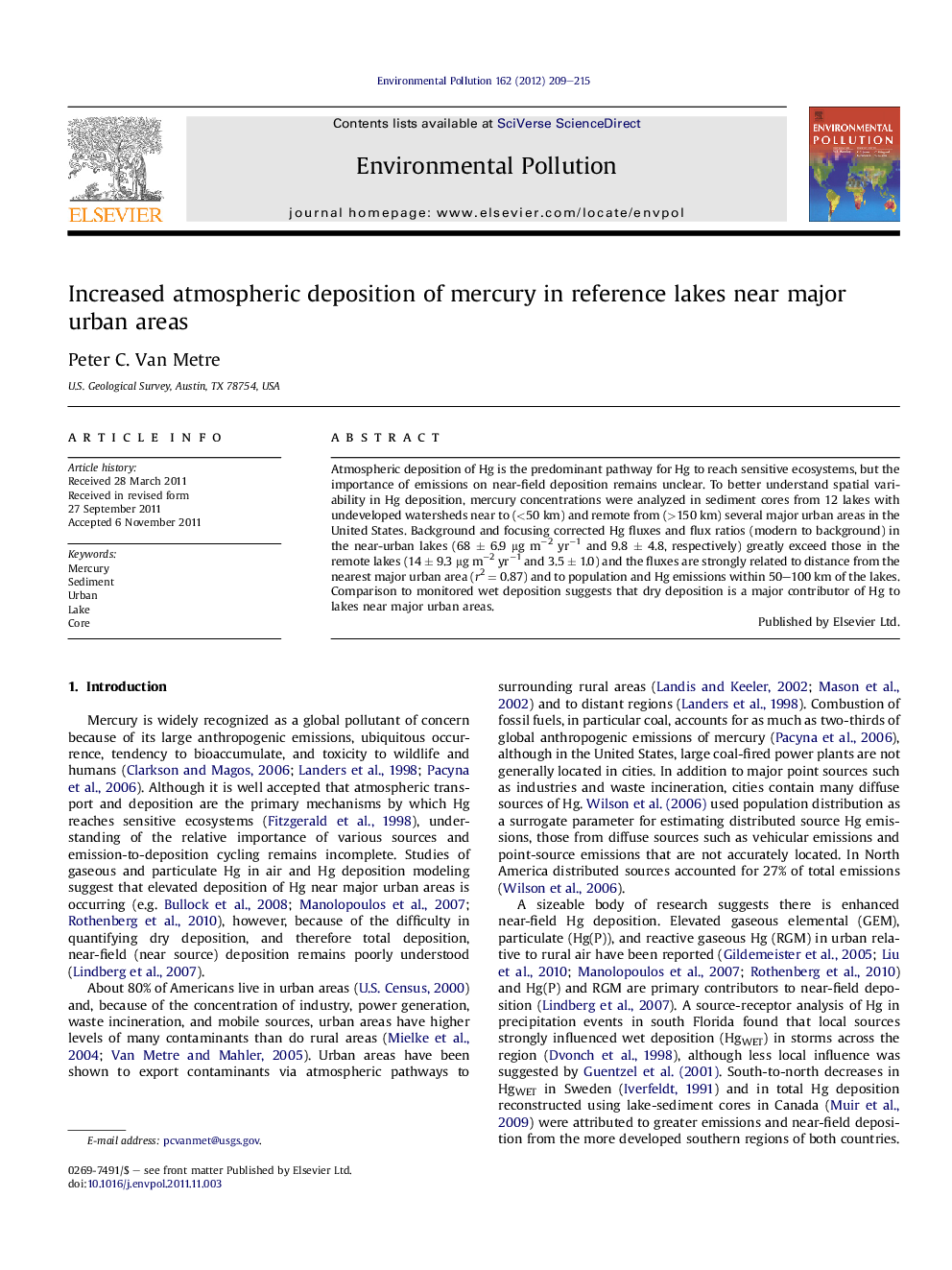| کد مقاله | کد نشریه | سال انتشار | مقاله انگلیسی | نسخه تمام متن |
|---|---|---|---|---|
| 4424973 | 1619210 | 2012 | 7 صفحه PDF | دانلود رایگان |

Atmospheric deposition of Hg is the predominant pathway for Hg to reach sensitive ecosystems, but the importance of emissions on near-field deposition remains unclear. To better understand spatial variability in Hg deposition, mercury concentrations were analyzed in sediment cores from 12 lakes with undeveloped watersheds near to (<50 km) and remote from (>150 km) several major urban areas in the United States. Background and focusing corrected Hg fluxes and flux ratios (modern to background) in the near-urban lakes (68 ± 6.9 μg m−2 yr−1 and 9.8 ± 4.8, respectively) greatly exceed those in the remote lakes (14 ± 9.3 μg m−2 yr−1 and 3.5 ± 1.0) and the fluxes are strongly related to distance from the nearest major urban area (r2 = 0.87) and to population and Hg emissions within 50–100 km of the lakes. Comparison to monitored wet deposition suggests that dry deposition is a major contributor of Hg to lakes near major urban areas.
Figure optionsDownload as PowerPoint slideHighlights
► Hg deposition analyzed in cores from 6 near-urban and 6 remote reference lakes.
► Focus and background corrected Hg flux is ∼4.5 times greater near major cities.
► Strong relation (r2 = 0.87) between Hg deposition and distance from nearest city.
Journal: Environmental Pollution - Volume 162, March 2012, Pages 209–215